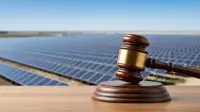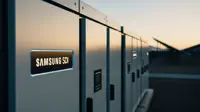Scientists on way to creating urine-driven robo
11 Nov 2013
Scientists have advanced a step closer to creating a truly autonomous waste-driven robot, with an artificial heart they built to pump urine into the machine's bacterially-driven "engine room".
 The ''EcoBot'' gets power from microbial fuel cells that generate low-level power from waste organic matter.
The ''EcoBot'' gets power from microbial fuel cells that generate low-level power from waste organic matter.
The contraption is the product of research at the Bristol Robotics Laboratory in association with the University of the West of England and University of Bristol.
According to the team, when heated with an electric current, the artificial muscles compressed a soft region in the centre of the heart-pump, which caused the fluid to be ejected through an outlet and pumped to a height sufficient to deliver fluid to an EcoBot's fuel cells.
The artificial muscles are then cooled and returned to their original shape with the removal of the electric current causing the heart-pump to relax and prompting fluid from a reservoir to be drawn in for the next cycle.
According to Peter Walters, lead author of the study which appeared in today's Bioinspiration and Biomimetics, the artificial heartbeat was mechanically simpler than a conventional electric motor-driven pump by virtue of the fact that it employed artificial muscle fibres to create the pumping action, rather than an electric motor, which was by comparison a more complex mechanical assembly.
At the heart of the mechanism of the EcoBot is a new device capable of pumping human waste into the "engine room" of a self-sustaining robot.
The artificial device, which mimics the action of the human heart incorporates smart materials called shape memory alloys and could be used to deliver human urine to future generations of EcoBot -- a robot capable of functioning completely on its own, collecting waste and converting it into electricity.
EcoBots, it is believed, may be tasked in future, to monitor areas with dangerous levels pollution or dangerous predators, so as to involve little human maintenance.
It had already been shown that robots of the type could generate their energy from rotten fruit and vegetables, dead flies, waste water, sludge and human urine.
According to Walters, in the future, urine-powered EcoBots could perform environmental monitoring tasks such as measuring temperature, humidity and air quality.
Also a number of EcoBots could function as a mobile, distributed sensor network. He added, in the city environment, they could re-charge using urine from urinals in public lavatories, while in rural environments, liquid waste effluent could be collected from farms.
(Read more: Pumping Fuel in Ecobot)






















